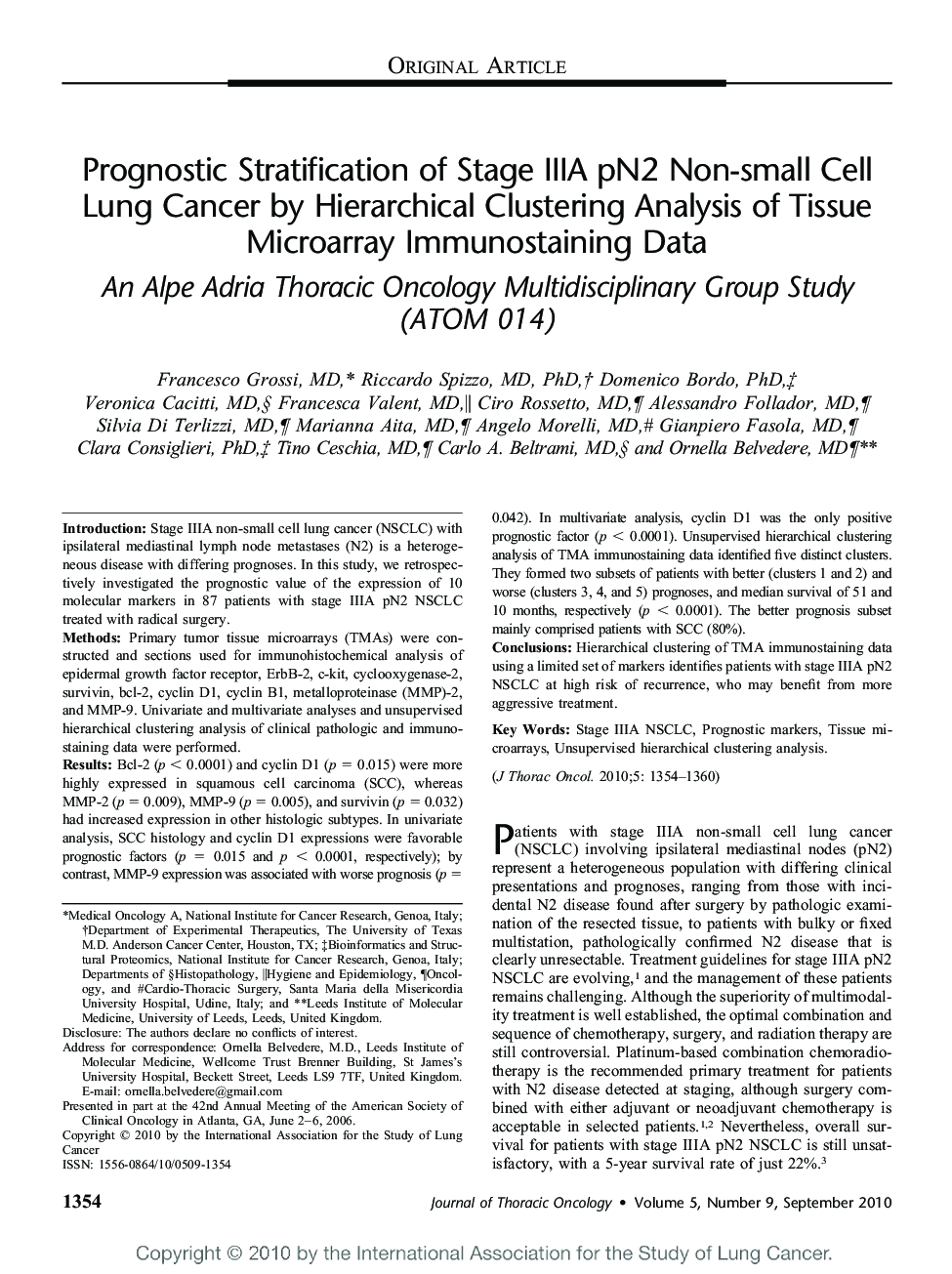| کد مقاله | کد نشریه | سال انتشار | مقاله انگلیسی | نسخه تمام متن |
|---|---|---|---|---|
| 3991608 | 1258779 | 2010 | 7 صفحه PDF | دانلود رایگان |

IntroductionStage IIIA non-small cell lung cancer (NSCLC) with ipsilateral mediastinal lymph node metastases (N2) is a heterogeneous disease with differing prognoses. In this study, we retrospectively investigated the prognostic value of the expression of 10 molecular markers in 87 patients with stage IIIA pN2 NSCLC treated with radical surgery.MethodsPrimary tumor tissue microarrays (TMAs) were constructed and sections used for immunohistochemical analysis of epidermal growth factor receptor, ErbB-2, c-kit, cyclooxygenase-2, survivin, bcl-2, cyclin D1, cyclin B1, metalloproteinase (MMP)-2, and MMP-9. Univariate and multivariate analyses and unsupervised hierarchical clustering analysis of clinical pathologic and immunostaining data were performed.ResultsBcl-2 (p < 0.0001) and cyclin D1 (p = 0.015) were more highly expressed in squamous cell carcinoma (SCC), whereas MMP-2 (p = 0.009), MMP-9 (p = 0.005), and survivin (p = 0.032) had increased expression in other histologic subtypes. In univariate analysis, SCC histology and cyclin D1 expressions were favorable prognostic factors (p = 0.015 and p < 0.0001, respectively); by contrast, MMP-9 expression was associated with worse prognosis (p = 0.042). In multivariate analysis, cyclin D1 was the only positive prognostic factor (p < 0.0001). Unsupervised hierarchical clustering analysis of TMA immunostaining data identified five distinct clusters. They formed two subsets of patients with better (clusters 1 and 2) and worse (clusters 3, 4, and 5) prognoses, and median survival of 51 and 10 months, respectively (p < 0.0001). The better prognosis subset mainly comprised patients with SCC (80%).ConclusionsHierarchical clustering of TMA immunostaining data using a limited set of markers identifies patients with stage IIIA pN2 NSCLC at high risk of recurrence, who may benefit from more aggressive treatment.
Journal: Journal of Thoracic Oncology - Volume 5, Issue 9, September 2010, Pages 1354–1360